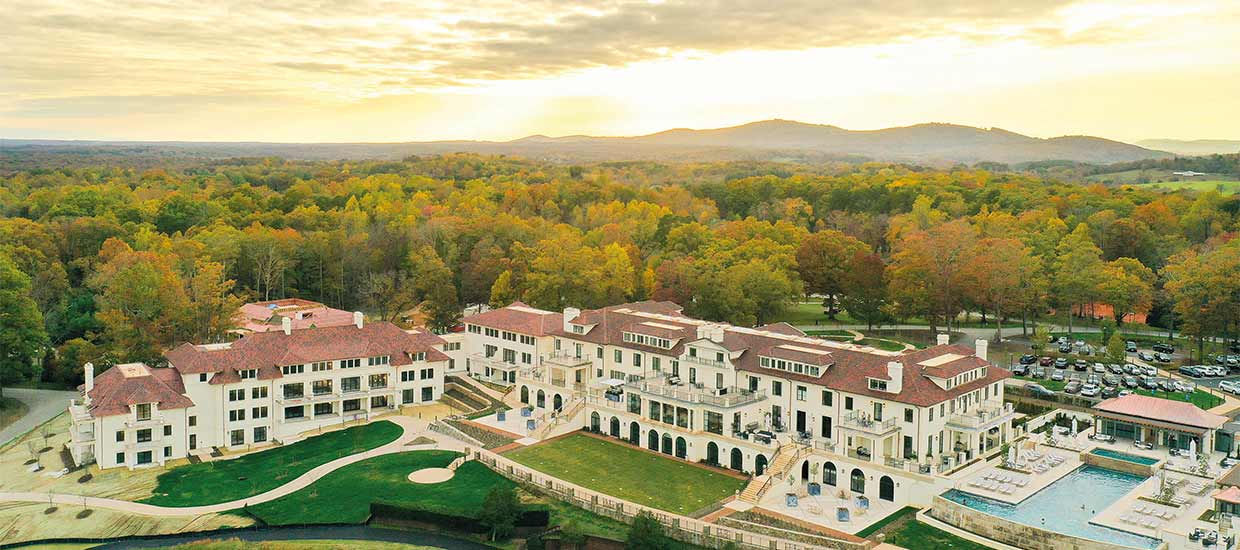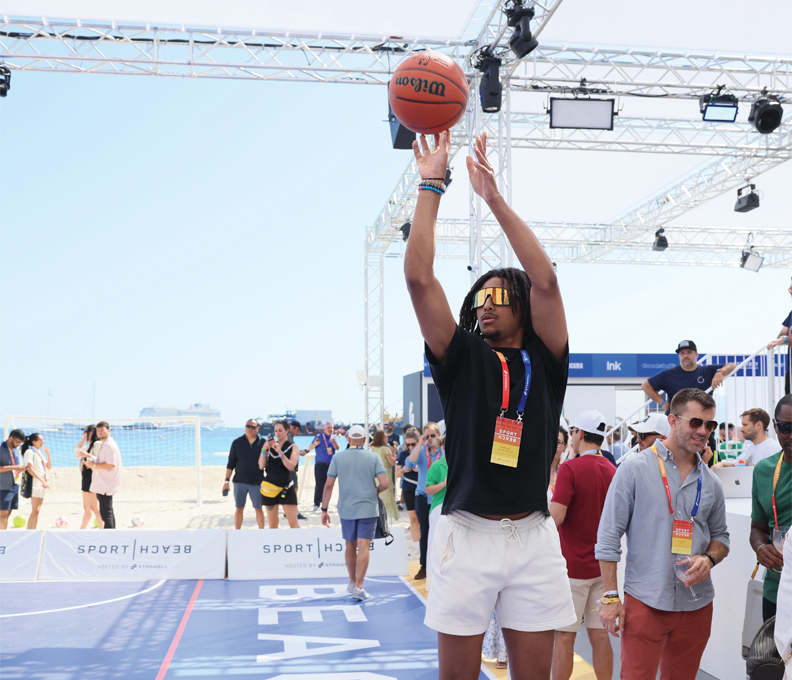Change generation
November 1, 2016


Is the work desk missing from your hotel room? Blame it on Millennials. Did you search in vain for a check-in desk on your arrival? Blame it on Millennials. In fact, you can blame (or praise) Millennials for just about any change in your hotel experience, from booking to post-stay – or at least on how hoteliers perceive the way Millennials behave.
As the hospitality industry scrambles to adapt to upcoming generations of travelers, the hotel is becoming a new kind of product – geared to a high-tech, low personal contact, communal style gaining favor among travelers of all age groups.
The disappearing room desks and check-in counters are merely symptomatic of the seismic shifts. “There is much less emphasis on the working corner in the guestroom,” says Anthony Ingham, global brand leader for W Hotels. “We moved away from desks a long time ago. At our London hotel we have a communal table which serves as a makeup table in the morning and a workstation or cocktail bar later. People work in the bed or on the sofa – anywhere but the desk.”
At the tech-centric Axiom Hotel in San Francisco, guestrooms have Task Desks (desks on wheels) that can be moved around the room to allow guests to work where they like. And at Hilton’s recently announced Tru brand, according to Phil Cordell, global head of focused service for Hilton, “Tru does not have a desk in the guestroom. Instead, there is a versatile and comfortable lounge and task chair, with an integrated work surface with great lighting and access to power.”
Of course the check-in desk is also fading in many hotels. Russell George, general manager of the Hyatt Regency Trinidad, says the hotel’s iPad Solution offers quick and easy check-in without lines. The system allows staff to search reservations and send “room ready” notifications through e-mail or text, make room keys and provide digital receipts.
And check this out: at Marriott’s youthful Moxy Hotels – check-in takes place at the bar. Yes, Marriott.
While the changes are credited to the influence of Millennials, it’s actually much broader than that. “It’s about the changing behavior of multiple populations,” says Bashar Wali, president of Provenance Hotels. “The Millennials have been a driving force because of their adaptability to technology and their lack of desire for human interaction.”
That same multi-generational outlook was behind the design of Hilton’s Tru brand, according to Cordell. “We wanted to create a brand that appealed to travelers across generations that share a common, youthful mindset rather than for one narrow demographic. We made choices that would resonate with Millennials, Gen Xers, Gen Yers and Boomers, and these are evident in the final design.”
Similarly, Toni Stoeckl, vice president of lifestyle brands for Marriott, says, “Our lifestyle portfolio is positioned to capture the loyalties of Generations X (born just after Boomers) and Y (the pre-Millennials), which are expected to account for 90 percent of the working age population within a decade and more than 60 percent of Marriott International’s business within the next four years. The numbers alone demand change in how hotels do business and treat their guests.”
And even the relentless consolidation in the lodging industry is seen as part of this demographic earthquake. Daniel Marre, a lawyer who specializes in hospitality issues and finance, notes, “One of the reasons for Marriott acquiring Starwood is to acquire their lifestyle brands that appeal to Millennials.”
Of course, Airbnb and other sharing options are also a force driving some of these changes, since the opportunity to experience a destination like someone who lives there appeals to younger travelers. While there is a perception that Airbnb trends younger, a spokesperson for the company says it does not compile age demographic data.
Blurring Work and Play
Many of the generational-driven changes emerge from what is perceived as a blurring of work and play. “According to a 2014 report by Pew Research Center, only 26 percent of Millennials are married,” says George, at the Hyatt Regency Trinidad. “And given the greater freedom from family obligations, we infer that more of them are likely to approach business travel as a lifestyle experience.”
The work/play melding even extends to corporate housing, which had previously been a fairly anonymous form of lodging. “Millennials look to long-term stays as an opportunity to have more robust cultural experiences,” says T.J. Spencer, vice president, sales for Oakwood Worldwide. “As a result, we’re seeing a bigger emphasis on communal work and lounge spaces where travelers can socialize, bond and work productively in an open, collaborative area,” Spencer adds.
Public and private hotel spaces are undergoing dramatic change to accommodate that work/play dynamic. Moxy Hotels’ living rooms (what lobbies are called these days) “become the center of activity, giving guests fun ways to work and play hard,” according to Stoeckl. “The living room at each hotel is ignited with games, books and other ways to amp up the fun. You may even find a classic arcade game somewhere.”
Pod 39 in New York has designed its common areas around the idea that play and fun are things that guests need to look for outside the hotel. “We don’t believe that the hotel bar and the fitness center should be your only sources of enjoyment in a hotel,” says general manager Scott Yo. “One of our favorite repeat guests who is a director level manager at a very well know pharmaceutical company will only stay at Pod Hotels since discovering us accidentally after being invited to play ping pong at one of our hotels.”
And Cordell says, “The lobby space at Tru by Hilton is called The Hive and features four distinct zones for lounging, working, eating or playing. Guests can choose to interact with others, or enjoy quiet time in one of the private alcoves located in the space,” he explains.
With all that public space action, the room has taken on a different status as well. Says Wali, “The room is now the place you sleep and shower because you are no longer tethered to a desk. Before, you had to be in the room to get an Internet connection but now the room just has to be comfortable and esthetically pleasing. I’m not a Millennial but I would rather sit in the lobby, work, order a beer and watch people. Humans are social animals – and we are now reallocating resources accordingly.”
According to Marisa Aranha, vice president of sales and marketing for Hotel Jen, the Millennial-targeted brand operated by Shangri-La Hotels, “At the Hotel Jen Tanglin Singapore, the room lighting can be set for different moods; the coffee table can be moved around to become a worktable; the work desk and high chair are designed to enable you to work comfortably in front of a laptop or mobile device; and the ironing board is located in the drawer under the sofa.”
Even staff uniforms are evolving. Based on feedback from young travelers, the male associates at the JW Marriott Grand Rapids wear fashionable suits with colored pocket squares. At Hilton West Palm Beach valet staff wear all-black Shell Top Adidas sneakers, known as Superstars; bartenders flaunt leather vests and baristas wear flat caps – even housekeeping staff wear non-traditional hospitality uniforms.
Connection, Not Conversation
The paradox of the new hotel is that with all the clamor for communal public spaces, many travelers do not want to interact with hotel staff – except electronically. So, as Wali says, “We now do everything by text. When a guest arrives we give them a number that allows them to text us and we can text back. If you want someone to clean the room or deliver an iron, you just text. Romantic older generations may think we are removing human contact but this is so much more quick and efficient for everybody.”
Says Ingham, “We are moving toward a choice of communicating face to face or through the phone; we rolled out a phone app where you can communicate via SMS whenever about whatever. Rather than the old system of having a computer system that checks phone calls, this tracks all inquiries and keeps records.”
Karen Magee, co-founder of Young Travel Professionals and director of corporate sales, North America for The Doyle Collection, an Irish-owned group of hotels (mostly in the UK and one in Washington, DC) says, “The key thing that Millennials want is convenience. They are used to instant gratification and the experience they have when traveling is certainly no exception. That’s why mobile check-in and the ability to text requests to the front desk or room service have been hugely popular.”
Technology, especially a strong and free WiFi connection, is at the center of the appeal of many hotels to the changing behavior of travelers. The Axiom has made tech central to its appeal with an abundance of plug-in outlets in public spaces and guestrooms.
Patty Kang, director of sales and marketing for the Axiom, notes the hotel does not restrict the number of devices guests can connect to their WiFi. “Guests now travel with several devices and many places put a restriction on the number of devices that can connect, or charge an additional fee. Another great WiFi feature is that guests only need to connect once to their room’s Internet during their stay.”
Kimpton guest rooms are equipped with plenty of easily accessible power outlets and charging stations. “In our newer hotels and restaurants, we also have communal tables in the living room lobbies with multiple power outlets and outlets underneath the bar counter,” says Christine Lawson, senior vice president-sales and catering for Kimpton. “That means a guest can power up and stay connected anywhere throughout our property.”
While boutique hotels and hip brands are clearly targeting a new generation of travelers, luxury operators are responding in their own ways. Ana Brand, director for global guest experience and innovation for the Dorchester Collection, known for such properties as the Beverly Hills Hotel, says, “Millennials have the same preferences as other generations, however these preferences are now delivered through different channels. A traditional guest may ask the concierge for choices and convenience, while a Millennial traveler will seek these attributes digitally.”
The trend today is away from traditional in-person recognition and service in favor of digital recognition, Brand says. “Some of our Millennial travelers prefer not to be recognized through name usage during the stay, and they don’t prefer attentive service or interaction with staff,” she explains. “What they want is recognition and engagement via social media – having hotels like their photos on Instagram or re-tweet their tweets on Twitter.”
By Harvey Chipkin




